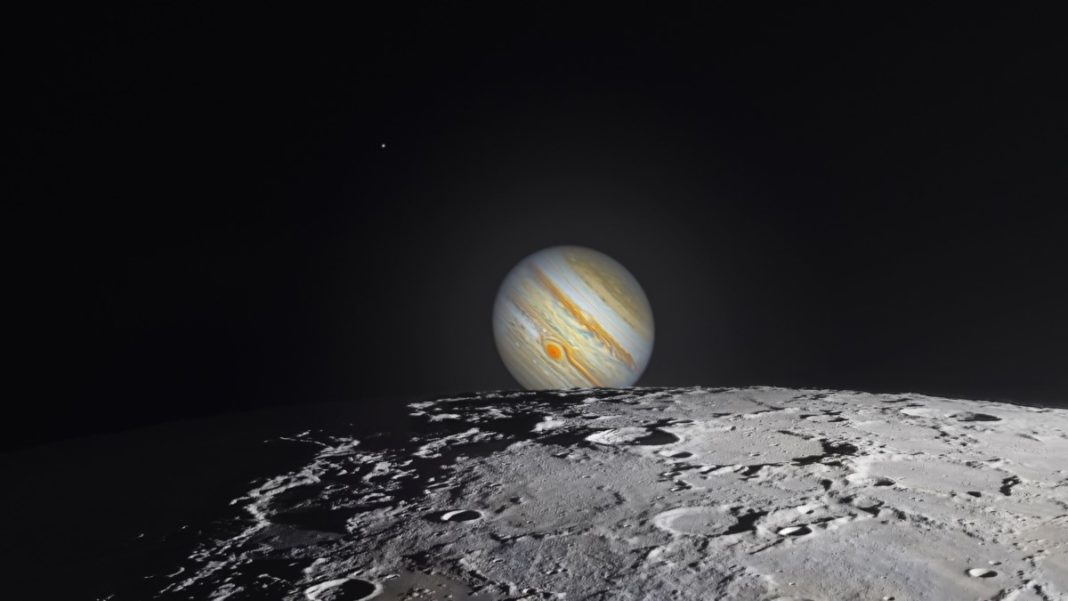INDIA: Jupiter, the largest planet in our solar system, has long captivated astronomers and space enthusiasts with its awe-inspiring features. Among its many intriguing characteristics, one phenomenon stands out as a true cosmic enigma—the Great Red Spot.
This colossal storm, resembling a gigantic hurricane, has puzzled scientists for centuries, but recent advancements in space exploration and observation techniques are shedding new light on its origins and nature.
Measuring an astonishing 16,350 kilometres (10,160 miles) in width, the Great Red Spot is nearly three times the size of Earth.
This massive tempest is a prominent feature of Jupiter’s turbulent atmosphere in the planet’s southern hemisphere.
The storm’s distinct crimson hue has captured imaginations and sparked curiosity, but the persistence of this celestial cyclone truly boggles the mind.
Scientists have observed that the Great Red Spot rotates anticlockwise, completing a full rotation every six Earth days.
Fierce winds that reach speeds of up to 430 kilometres per hour (270 miles per hour) make the storm one of the most powerful and sustained storms in the solar system.
However, what causes this tremendous storm to persist for centuries remains a subject of ongoing research and debate.
Recent studies utilising data gathered from NASA’s Juno spacecraft, which has been in orbit around Jupiter since 2016, have provided valuable insights into the Great Red Spot.
These observations have revealed that the storm extends deep into Jupiter’s atmosphere, at least 300 kilometres (186 miles) below the cloud tops.
Scientists believed that the storm’s longevity was due, in part, to the planet’s immense size as well as its unique atmospheric conditions.
While the exact mechanisms behind the storm’s vivid coloration are still unknown, scientists speculate that chemical reactions between sunlight and compounds in Jupiter’s atmosphere, such as ammonia and methane, may contribute to the Great Red Spot’s striking red hue.
The storm’s complex interaction with other atmospheric disturbances on Jupiter, including weaker tempests and atmospheric jets, further adds to its intriguing nature.
However, recent observations also indicate that the Great Red Spot is slowly shrinking. Over the past century, the storm has decreased in size by approximately 50 percent, raising questions about its eventual fate.
Some scientists theorise that the storm may dissipate entirely, while others propose that it could transform into a different atmospheric feature.
Understanding the Great Red Spot is crucial for unravelling the mysteries of Jupiter and studying weather patterns and atmospheric dynamics in general.
The turbulent storm serves as a natural laboratory for scientists to explore fluid dynamics, atmospheric physics, and the formation and behaviour of storms on a grand scale.
As our exploration of Jupiter continues, with future missions like the European Space Agency’s JUICE (Jupiter ICy Moons Explorer) scheduled for launch in the late 2020s, we can expect further revelations about the Great Red Spot.
These discoveries will deepen our understanding of the storm’s evolution, dynamics, and role in shaping Jupiter’s complex weather system.
The Great Red Spot on Jupiter remains a mesmerising celestial spectacle that has fascinated generations of skygazers.
As our knowledge of the solar system’s largest storm expands, we inch closer to unlocking the secrets hidden within this mesmerising cosmic masterpiece, which continues to astound and inspire scientists and stargazers alike.
Also Read: NASA’s Juno Spacecraft to Make Historic Close Flyby of Jupiter’s Volcanic Moon, Io



